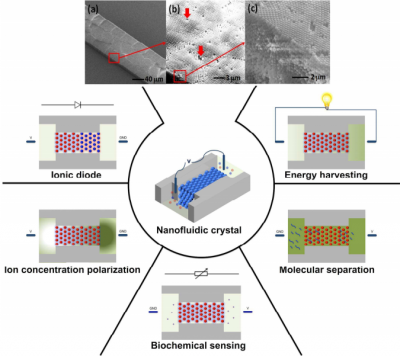
Wei Ouyang, Jongyoon Han, and Wei Wang
DOI: 10.1039/C7LC00588A
Abstract:
With various promising applications demonstrated, nanofluidics has been of broad research interest in the past decade. As nanofluidics matures from proof of concept towards practical applications, it faces two major barriers: expensive nanofabrication and ultra-low throughput. Up to date, the only material that enables nanofabrication-free, highthroughput, yet precisely controllable nanofluidic systems is the close-packed nanoparticle array, i.e. nanofluidic crystal. Recently, significant progresses in nanofluidics have been made using nanofluidic crystal, including high-current ionic diodes, high-power energy harvesters, efficient biomolecular separation, and facile biosensors. Nanofluidic crystal is seen as a key to applying nanofluidic concepts into real–world applications. In this review, we introduce the key concepts and models in nanofluidic crystal, summarize the fabrication methods, and discuss in-depth the various applications of nanofluidic crystal, highlighting its advantages in simple fabrication, low cost, flexibility, and high throughput. Finally, we provide our prospects on the future of nanofluidic crystal and its potential impacts.
